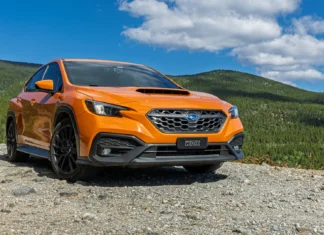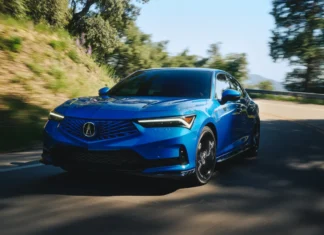
Watching car crash videos can be pretty gut-wrenching — at least for some. But there’s something about dropping a brand new car from a 30 meter (~100 feet) crane that takes it to another level. This isn’t some Top Gear stunt or a YouTuber screwing around just to see what happens. Instead, Volvo is taking this extraordinary approach to safety, to see how their cars react to the most extreme and severe crashes that can happen in the real-world.
The automaker teamed up with Swedish rescue services with a life-saving goal in mind. After a crane drops several Volvo cars from a crane, with interior cameras fitted for a first-hand look, rescue workers immediately tend to the wreckage. The idea is to gather data on quickly extricating any potential victims, getting them to the hospital within the “Golden Hour” — a timeframe that’s key to someone’s survival. Odds are, crashes this dramatic will result in severe injury, no matter how well the car is designed. Volvo has one of the most well-deserved reputations for safety, though. To that end, this offers new data points outside what they can normally simulate in crash-barrier testing in a lab.
This data isn’t strictly for these rescuers, either. Volvo says its findings will be made available to rescue workers throughout Sweden. Possible, teams internationally can use these reports as well.

The video speaks for itself
The video below shows how Volvo approached the “crash test” with rescuers. A single-car accident at highway speeds, getting in a severe t-bone accident and hitting a truck head on are the sorts of accidents this crane drop recreates. Håkan Gustafson, Volvo’s senior investigator with its Accident Research Team, says of the research: “We hope no one ever needs to experience the most severe accidents, but not all accidents can be avoided. So it is vital there are methods to help save lives when the most severe accidents do happen.”
Rescue workers normally just have the opportunity to train on old cars from scrapyards. Since car materials and design has advanced dramatically in the past several years, those tests don’t usually offer a complete picture of what rescuers will encounter when a modern car crashes. Many automakers, including Volvo, use high-strength steel. Safety cage construction and durability has improved, so rescuers need to know how to respond appropriately if the worst happens.
“Normally we only crash cars in the laboratory,” Gustafson says. “We know we would see extreme deformations after the [crane] test, and we did this to give the rescue team a real challenge to work with.” In total, the team dropped ten Volvo models to their doom. Engineers calculated how much pressure and force needed to be subjected to each car before the drop. That way, they can simulate the sort of damage rescuers may face when they come upon a major crash.
See how the testing went in this video Volvo released below (reposted by REC Anything):























